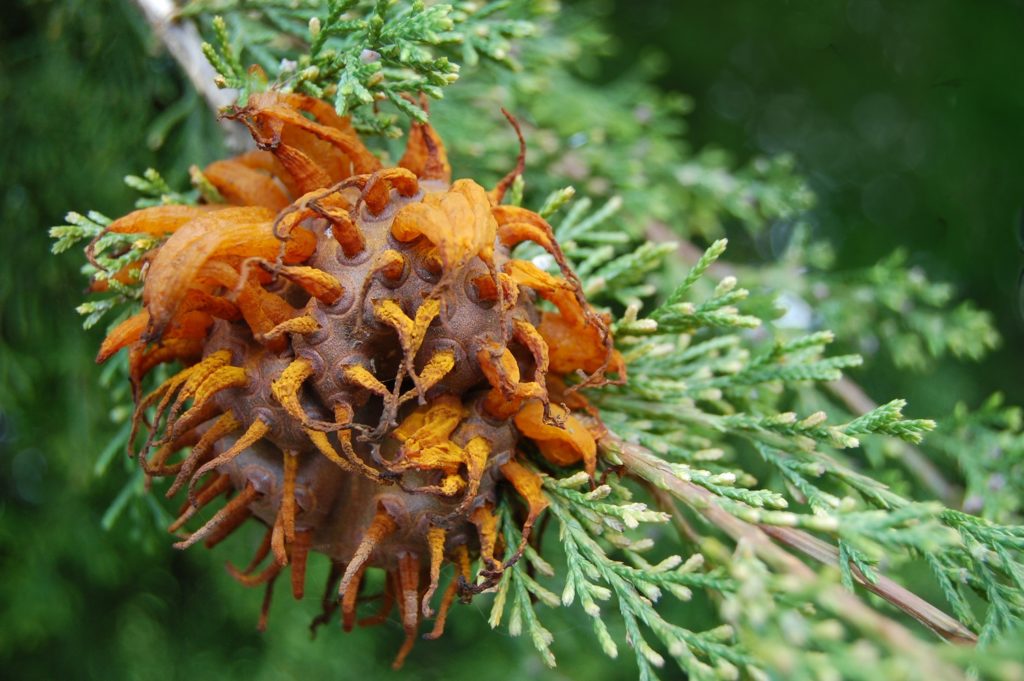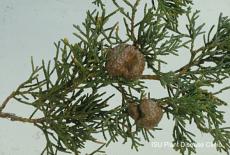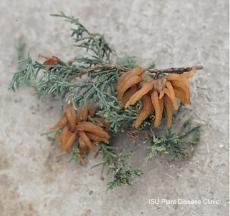What is cedar-apple rust?

What is cedar-apple rust?
Cedar-apple rust is an interesting disease. It requires both an apple and cedar or juniper to complete its life cycle. On the cedar, the fungus produces reddish-brown galls that are up to golf-ball size on young twigs. During wet weather these galls swell and begin to push out bright orange gelatinous tubular structures. Wind carries fungal spores from these gelatinous structures to susceptible apple or crabapple cultivars.
What does cedar-apple rust look like?
During warm rainy days in late April and early May, cedar trees infected with the cedar-apple rust fungus (Gymnosporangium juniperi-virginianae) will develop bright orange, gelatinous galls. Apple trees will present small, yellow spots that appear on the upper leaf surface shortly after bloom. Spots gradually enlarge and become a bright yellow-orange color, which are easy to identify.
What causes cedar-apple rust?
This disease requires both an apple and cedar or juniper to complete its life cycle. On the cedar, the fungus produces reddish-brown galls that are up to golf-ball size on young twigs. During wet weather events these galls swell and begin to push out bright orange gelatinous tubular structures. Wind carries these fungal spores from the gelatinous structures to susceptible apple or crabapple cultivars. Infection occurs when these spores land on a susceptible apple cultivar and moist conditions prevail. Small, yellow spots begin to appear on the upper leaf surface shortly after bloom. Spots gradually enlarge and become a bright yellow-orange color. These bright spots make the disease easy to identify on the leaves. Heavily infected leaves may drop prematurely. In late summer small tube-like structures develop on the underside of the apple leaves. Spores are released from these structures and are blown by wind back to susceptible cedars or junipers, completing the disease cycle.
How do I get rid of cedar-apple rust?
If you have followed along with this cycle, you might immediately think that a good way to break it would be to avoid planting susceptible hosts next to each other. Unfortunately, this is often impractical, because the fungal spores can travel as far as two miles. If cedar-apple rust is a problem on your existing apple or crabapple trees, fungicide sprays can be used to protect trees from infection. Please contact our plant health care department for solutions on treating this disease.




